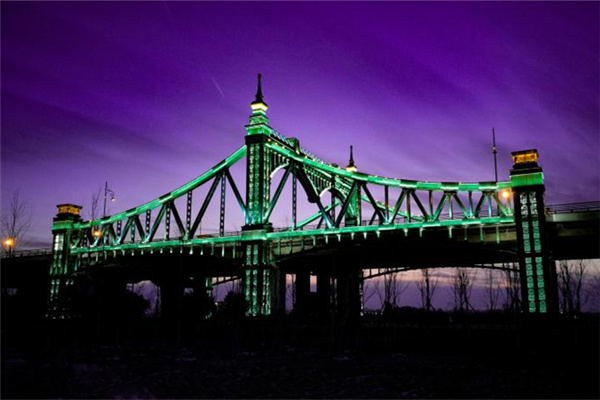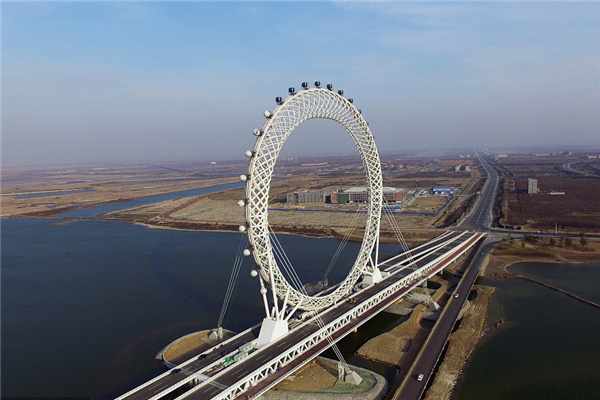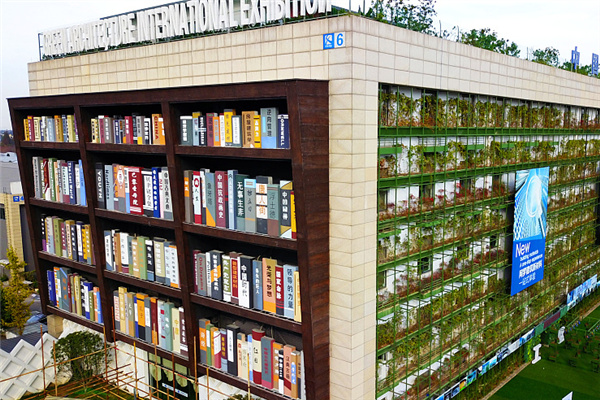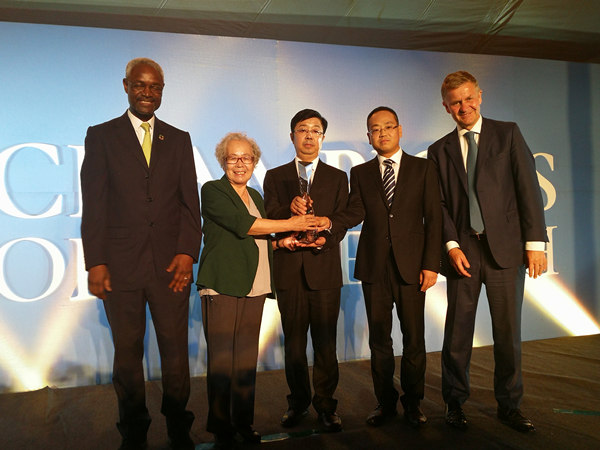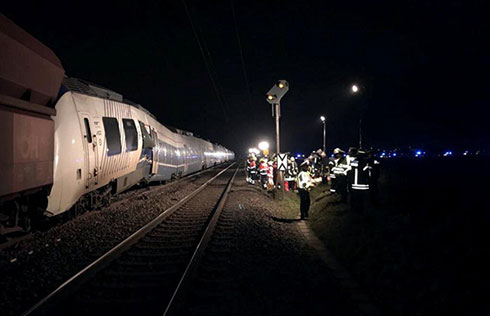

|
Tianjin Binhai New Area. In 2006, the State Council approved the Tianjin Binhai New Area and encouraged it to carry out financial reforms in businesses and markets in order to test them for the rest of the nation. |
TIANJIN: At an unprecedented tough time, Tianjin policy-makers are racking their brains to maintain its growth with various approaches.
They include increasing the high-end manufacturing sector and enhancing the modern service industry. That's the message conveyed by Tianjin Mayor Huang Xingguo at the second session of the 15th municipal people's congress last week.
"The year of 2009 may turn out to be the most difficult year for Tianjin. However, Tianjin's development steam is still on," Huang told the local congress.
He said in addition to improving the high-end manufacturing industry and luring more service industry businesses, efforts would include ramping up the construction of the Binhai New Area.
In 2006, the State Council approved the Tianjin Binhai New Area and encouraged it to carry out financial reforms in businesses and markets in order to test them for the rest of the nation.
For 2009, Tianjin's gross domestic product growth pace is planned at 12 percent year-on-year, compared with last year's 16 percent. The city's actual foreign investment is expected to grow at about 15 percent year-on-year this year, much lower than last year's 40.6 percent.
It's clear that many difficulties lie ahead and the Tianjin municipal government has no choice but to figure out new ways to tide over the crisis.
One effort will involve planning two new shipping and aviation funds, said Huang.
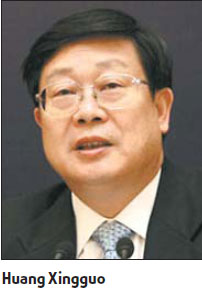
As part of the effort, the National Development and Reform Commission approved Tianjin's application to raise a 20-billion-yuan shipping industrial fund.
The shipping fund is now in the pipeline, Li Weibin, head of China Development Bank's Tianjin branch, told China Business Weekly.
A Tianjin municipal government official told China Business Weekly that given the current economic situation, it might be difficult for the aviation fund to get the nod this year.
There are also difficulties for the shipping fund to be collected this year due to sluggish shipping demand. However, the 20-billion-yuan shipping fund can start with a lower initial phase, for example, 2 billion yuan, the official said, on condition of anonymity.
According to experts, the 20-billion-yuan shipping industrial fund was planned to fuel the financing system for China's shipbuilding industry, and to build international shipping and logistic centers, such as Tianjin.
If approved, the shipping industrial fund may equal the shipping fund in terms of scale, the unidentified official said.
Financial innovation holds the key to fueling the development of major projects in Tianjin, Li, from China Development Bank, said.
In developed countries, due to the relatively mature fund and capital markets, the proportion of direct financing can reach 50 percent or even higher. But in China the ratio is only 10 percent.
The problems arising from the lack of direct financing affect the healthy development of the economy - businesses having financial difficulties cannot obtain capital effectively.
Fortunately, the Tianjin government has realized the problem.
"We will spare no effort to increase the ratio of direct financing, developing private equity funds and introducing all categories of financial institutions," Huang said.
Tianjin has been tagged by the central government to develop a private equity fund center in China. The city is taking action and perfecting policies and measures to attract funding enterprises. So far, there are more than 200 equity and venture capital funds in Tianjin, Huang said.
In May 2008, the NDRC issued a policy supporting Tianjin's efforts to develop equity investment funds.
The Tianjin Binhai New Area is also building the Tianjin Dongjiang Port Bonded Area.
A special ship registration format will be tested within the Dongjiang Port Bonded Area, and offshore financial operations may be begin on a trial basis later this year, Huang said.
A rocket carrier project and 1-million-ton ethylene project will also begin this year in the new area.
The high-end manufacturing industries promoted by Huang involve the aviation industry, third-generation mobile phones and solar cells.
The modern service industry includes financial services, logistics, commerce, tourism, entertainment, culture and exhibitions.
(China Daily 01/19/2009 page10)
